Hall of Fame: Worst One and Done Snubs in MLB History

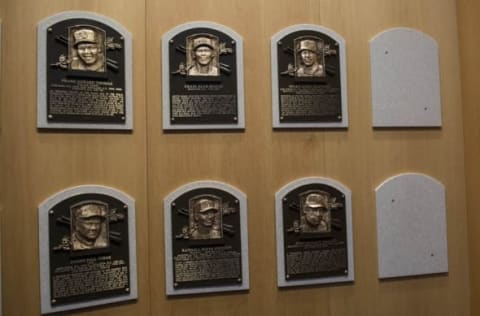
These 10 players are the best to receive only one year of consideration for the MLB Hall of Fame before dropping off the ballot.
Sometimes it’s an honor just to be nominated. This often holds true for entertainment awards shows as well as Hall of Fame voting. With less than two weeks to go before the 2017 class is announced, we can be fairly certain that Jeff Bagwell and Tim Raines will be elected while players like Arthur Rhodes and Matt Stairs can put even appearing on the ballot once as their crowning achievements.
Once nominated, players can remain on the Hall of Fame ballot for 10 years (down from 15 up until a couple years ago); however, if a player fails to appear on five percent of ballots his eligibility terminates. Usually star players who aren’t quite Hall-caliber players hang around for multiple years, but occasionally some greatness falls through the cracks. Over the years, quite a few players appeared on the ballot with numbers deserving of strong consideration, yet were unable to crack that five percent barrier and never reappeared.
Here are the 10 best players to go one-and-done on the Hall of Fame ballot. This list does not include players who received less than five percent but were granted amnesty and later reappeared (see Dick Allen and Ron Santo). The driving, though not exclusive, factor in this list is wins above replacement from Baseball Reference (bWAR) and Fangraphs (fWAR). Career longevity is thus a factor, as is actually appearing in games. If you’re looking for relief pitchers, you won’t find them here. Sorry, Dan Quisenberry fans.
Defense is also factored into WAR calculations, for better or worse. Carlos Delgado was well on his way to some Hall-worthy numbers before hip problems ended his career prematurely. Even so, he hit at least 30 home runs in 10 consecutive seasons from 1997-2006 and had a tremendous career batting line of .280/.383/.546. Poor defense at first base throughout his career suppressed his WAR totals and even though he ended his career with 473 home runs without so much as a whisper of PEDs, he received only 21 votes (3.8%) in 2015. But he’s not among the top 10 players to meet this fate.
An honorable mention should go to Javier Vazquez. With 43.3 bWAR and 53.9 fWAR, Vazquez would not crack this list. He does, however, rank 30th in career strikeouts and had a very productive 14-year career that was also cut short by injuries. Vazquez would have been eligible to appear on the ballot this year, but is noteworthy here for not even being nominated.
Here are the 10 best players to appear just once on a Hall of Fame ballot.
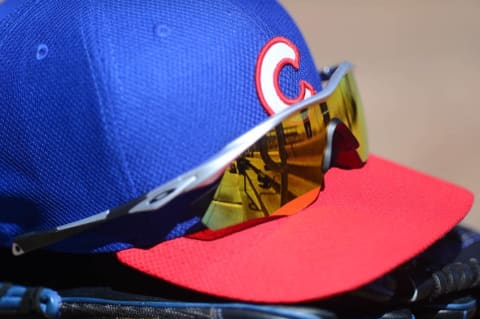
Rick Reuschel – SP – 1972-1991 – 0.4% in 1997
Rick Reuschel doesn’t really stand out. He won 20 games only once, in 1977, and never struck out more than 168 in a season. He was durable, though, and put up great value for the Cubs, with whom he spent much of his career, by making at least 35 starts each year from 1973-1980. Reuschel won a respectable 214 games in his career against 191 losses, putting up a 3.37 ERA and 114 ERA+.
The Cubs sent Reuschel to the Yankees during the 1981 season, and he appeared in his first World Series that season. As a testament to Reuschel’s longevity, he returned to the World Series in 1989 as the ace of the San Francisco Giants at the age of 40. That season he made his third all-star team and posted a sub-3.00 ERA while garnering Cy Young award votes for the third time in his career.
Big Daddy put up an impressive 70.0 bWAR and 68.2 fWAR in his 19 seasons. Big Daddy was more of a career accumulator than a bona fide star, but one can’t ignore the fact that there is value in being able to accumulate. Actually, the voters did ignore the fact, and he received just two votes in 1997.
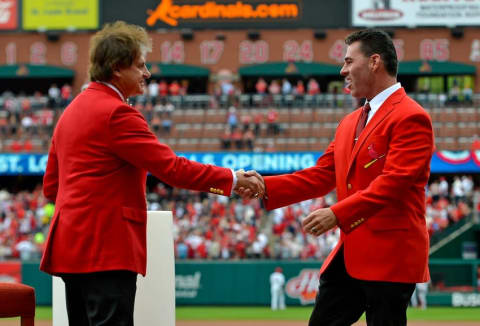
Jim Edmonds – CF – 1993-2010 – 2.5% in 2016
Jim Edmonds was never quite as good defensively as his reputation would lead people to believe, but the mention of his name will always conjure up one of the best catches in baseball history. When with the Anaheim Angels in 1997, Edmonds made a running, diving, over-the-head catch that cemented his defensive reputation for the rest of his career that included eight Gold Gloves.
Edmonds’s greatest contributions came more at the plate than in the field, though. He finished his career with an impressive .284/.376/.527 line and a 132 OPS+. Injuries limited Edmonds to just 7,980 plate appearances over 17 seasons, and he appeared in 150 games in just four seasons. He was still able to produce 393 career home runs. In all, Edmonds totaled 60.3 bWAR and 64.5 fWAR.
Edmonds was traded to the St. Louis Cardinals from the Angels in the days leading up to the 2000 season in exchange for Kent Bottenfield and Adam Kennedy. He made his presence felt immediately with 42 homers and 108 RBI to go along with 129 runs scored. His best season, though, was in 2004 as the Cardinals won 105 games behind the “MV3” of Edmonds, Albert Pujols and Scott Rolen. The three sluggers accounted for 122 HR, 358 RBI, 344 runs. The Cardinals went on to the franchise’s first World Series in 22 years that season, eventually getting swept by the Red Sox
That 2004 season, in which Edmonds hit .301/.418/.643, was the last great season from Edmonds. He would continue to be an integral part of the Cardinals lineup for the 2006 championship season, and he played through his age 40 season, ending a fine career with a respectable part-time performance with the Milwaukee Brewers.
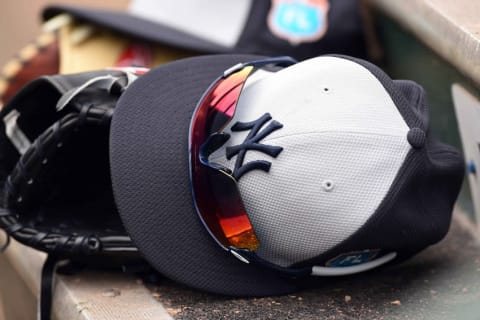
Willie Randolph – 2B – 1975-1992 – 1.1% in 1998
Willie Randolph is the rarest of all players – one who spent 13 seasons with the New York Yankees yet remained criminally underappreciated. In his 18 seasons, Randolph hit a modest .276 with minimal power, slugging just .351. He had outstanding on-base skills, though, resulting in a career .373 OBP, while never striking out more than 53 times in a season. Randolph was a phenomenal defender at second base, but he had the misfortune of playing in the American League at the same time as Frank White and Lou Whitaker, thus never winning a gold glove.
Randolph came up with the Pittsburgh Pirates at the age of 21 in 1975. With Rennie Stennett entrenched at second base, however, the Pirates sent Randolph to the Yankees after that season with Ken Brett and Dock Ellis for one season of Doc Medich. Clearly not Joe Brown’s finest moment. Randolph became an instant all-star in New York, though he didn’t receive any Rookie of the Year votes in 1976 running up against Mark Fidrych. The following season, Randolph secured his place hitting near the top of the Yankees lineup as New York won the World Series.
Randolph ranks seventh in career games played at second base, while his 115 total zone runs on defense are good for third behind Bill Mazeroski and White. Only Mazeroski and Nellie Fox turned more double plays at second. Randolph’s 1,243 walks are fourth among those who played the position. His career may not have been Hall of Fame caliber, but Randolph’s 65.5 bWAR and 62.1 fWAR should have garnered more consideration.
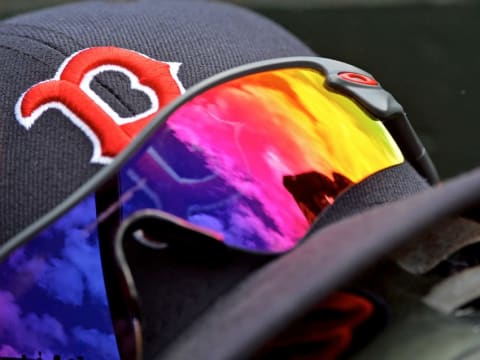
Reggie Smith – OF – 1966-1982 – 0.7% in 1988
Reggie Smith is one of baseball’s forgotten great switch-hitters. He was able to produce consistently from both sides of the plate, hitting .287 left-handed and .288 right-handed, though most of his power came hitting lefty. After a September callup in 1966, Smith entrenched himself in center field for the Red Sox in 1967 as a 22-year-old, finishing second in rookie of the year voting to Rod Carew. Though he later moved to right field, Smith was a solid defender in center in the early part of his career and won a gold glove.
Smith made multiple all-star appearances for each of the Red Sox, Cardinals and Dodgers. He twice led the league in doubles and once led the league in OBP and OPS+. The latter came in his best offensive season, 1977, when he hit .307/.427/.576 for the Dodgers with a career-best 32 home runs and 104 walks. That was the first of consecutive fourth place finishes in MVP voting.
Smith appeared in four World Series, eventually winning a ring with the Dodgers in his next-to-last season in 1981, though injuries limited him to pinch hitting duties. For his career, Smith accumulated 64.5 bWAR and 64.6 fWAR, totals that exceed those of Dave Winfield.
Reggie Smith is another player that falls into the category of not quite Hall of Fame material, but one would think he could have garnered more than just three votes.
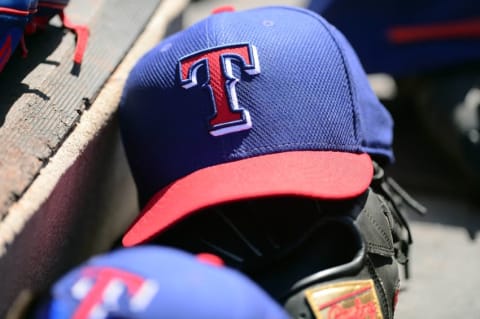
Buddy Bell – 3B – 1972-1989 – 1.7% in 1995
Buddy Bell was the middle generation of baseball’s Bell family, the son of Gus and the father of David and Mike. He was also the best of the Bells: a five-time all-star who falls behind only Brooks Robinson and Adrian Beltre on the list of the game’s best defensive third basemen.
Bell won six consecutive gold gloves for the Texas Rangers from 1979-1984, and was certainly no slouch at the plate either. Making his debut with the Indians in 1972, Bell hit for league-average numbers as just a 20-year-old. He hit for a 103 OPS+ during his seven years in Cleveland, but thrived with a .301/.358/.445 batting line over the next six seasons with the Rangers. From 1979-1984, during that uninterrupted stretch of gold glove awards, Bell averaged 6.0 bWAR per season.
In his 18 seasons, Bell contributed 66.1 bWAR and 61.7 fWAR across 10,009 plate appearances. His meager vote total of eight in 1995 Hall of Fame voting matched that of another underrated star, Darrell Evans. Those two players each surpassed 60 fWAR, yet their combined vote total would not have been enough to stay on the ballot for a second campaign.
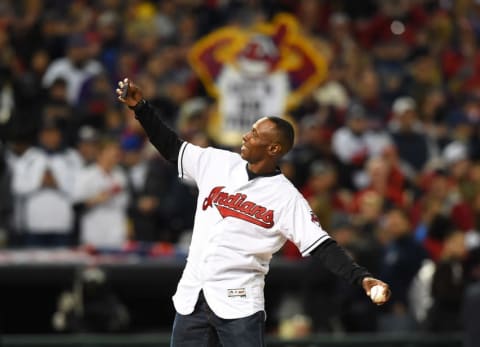
Kenny Lofton – CF – 1991-2007 – 3.2% in 2013
Kenny Lofton was a winning player. In the last 13 seasons of his 17-year career, his team made the playoffs 11 times, including two World Series. He got a late start, with his first full season coming at age 25 in 1992, but he was an instant star. Lofton led the American League in stolen bases in his first five seasons with the Indians, averaging 65 steals per year at an 82% success rate. He led the league in hits in the strike-shortened 1994 season and was an on-base machine, hitting for a career .299/.372/.423 line.
Lofton was an excellent defensive center fielder for the first half of his career, though the effects of age significantly lessened his ability over time. Though he spent only 10 seasons in Cleveland, the franchise to whom he is most closely linked, Lofton ranks seventh in Indians franchise history in bWAR with 48.5, ahead of Jim Thome. He is in the top 10 all-time for career games played in center, and his 68.2 career bWAR places him eighth all-time, above 13 Hall of Famers at the position.
Lofton made six consecutive all-star games and won four consecutive gold gloves. His peak MVP finish was fourth in 1994, when he led the league with 7.2 bWAR. As great as Lofton was, he was also a part of some big trades, having been swapped six times in his career. The biggest trade came just before the 1997 season, when he was sent with Alan Embree from the Indians to the Braves for Marquis Grissom and David Justice. Lofton would return to the Indians the following season. He also joined Aramis Ramirez in moving from the Pirates to the Cubs in 2003.
The 2013 Hall of Fame voting was a down year, with no players surpassing 75 percent for the first time in 17 years. Lofton was overlooked in the ballot logjam, named on just 18 of 569 ballots.
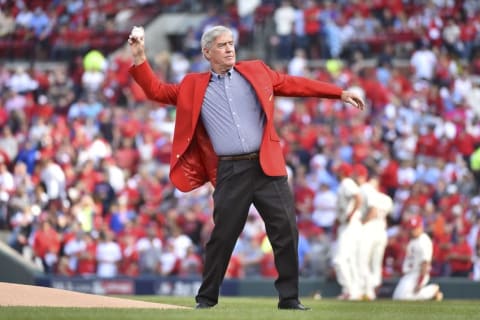
Ted Simmons – C – 1968-1988 – 3.7% in 1994
There are some one-and-done players not on this list who had higher career totals than Ted Simmons’s 50.1 bWAR and 54.2 fWAR, but none of them were catchers. Simmons was behind the plate for 1,771 games in his 21-year career, finishing top five in appearances at catcher for the decade from 1971-1980. He easily surpassed 3.0 WAR each year during that span.
Simmons spent his most productive years in a St. Louis Cardinals uniform and raked to the tune of .298/.366/.459 over 1,564 games for the Redbirds. He was only average behind the plate, but was a feared hitter. His 188 career intentional walks rank highest among catchers, and he led all of baseball in 1976 and 1977 in the category.
Simmons’s 1,389 RBI trail only Yogi Berra among catchers, and his 2,472 hits fall behind only Ivan Rodriguez. An 8-time all-star, Simmons ranks 8th in Cardinals history in WAR. He actually turned in value below replacement level over the course of his last five seasons in the majors, split between the Brewers and the Braves from 1984-1988, as he was relieved of his catching duties. Perhaps it is this memory of a struggling Simmons that prevented voters from taking a longer look at his candidacy.
Through his age-33 season, Ted Simmons was one of the 10 best catchers ever to play the game. Not only should he have received more than five percent of the vote in 1994; he should be in the Hall of Fame.
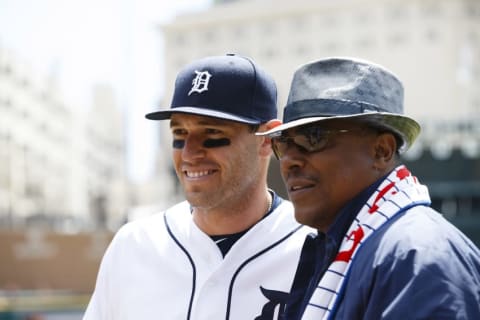
Lou Whitaker – 2B – 1977-1995 – 2.9% in 2001
At this point, the list stops making sense. Where Simmons is a borderline Hall of Fame player, these last three should absolutely have been enshrined in Cooperstown. Lou Whitaker is the first of these players.
Only Eddie Collins, Joe Morgan and Roberto Alomar played more games at second base than Whitaker. He was called up to the Detroit Tigers on September 9, 1977, the same day as Alan Trammell, and the two would form a potent offensive and defensive double play combination in the middle infield for the Tigers for the better part of two decades. Sweet Lou beat out a strong field that included Trammell, Paul Molitor and Carney Lansford for Rookie of the Year honors in 1978.
After that, the career-long underappreciation of Whitaker began. He was an all-star each year from 1983-1987 and won both the gold glove and silver slugger each year from 1983-1985, adding another silver slugger in 1987. But he only received MVP votes once, in 1983, when he finished eighth behind a career-best .320 batting average. It did not help that the Tigers made the playoffs just twice in his 18 full seasons, though they did win the World Series in 1984.
In addition to his defensive prowess, Whitaker was an above average hitter in each of his full seasons except for 1980, and even then he still managed a .331 on-base percentage as a 23-year-old. He finished his career with a .276/.363/.426 batting line and a 117 OPS+. He posted solid counting numbers with 244 HR and 2,369 hits. Whitaker’s 74.9 career bWAR ranks seventh among all second basemen, though he did not have a very high peak. He only posted two seasons in excess of 6.0 WAR, but he also had just two seasons of less than 2.0 WAR.
That 74.9 bWAR figure is ahead of such Hall of Famers as Frankie Frisch, Ryne Sandberg, Roberto Alomar and Craig Biggio. In 2001, Dave Winfield and Kirby Puckett were both elected to the Hall of Fame on their first ballot. Whitaker, who had a higher career WAR and peak WAR than each, received more than 400 fewer votes and fell off the ballot.
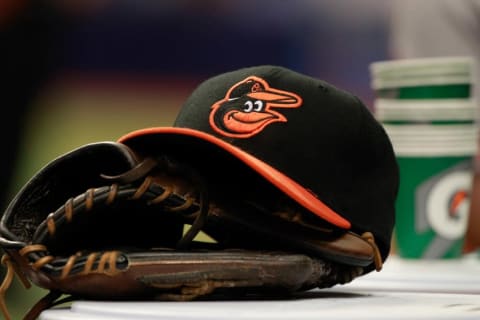
Bobby Grich – 2B – 1970-1986 – 2.6% in 1992
Bobby Grich did not have a very long career, appearing in just 2,008 games with 8,220 plate appearances. People didn’t value sabermetrics 25 years ago like they do now, so it’s easy to get stuck on Grich’s career batting average of .266 and relatively lowly totals of 1,833 hits and 224 home runs. We know better.
Grich had a career walk rate of 13.2%, resulting in a career OBP of .371. That, combined with Grich’s respectable .424 slugging percentage gave him a 125 OPS+. His defense at second was fantastic early in his career with the Baltimore Orioles, earning four consecutive gold gloves. In 1973 the double play tandem of Grich and Mark Belanger resulted in a combined 7.9 defensive WAR. In five full seasons with the Orioles, Grich averaged 7.0 bWAR, peaking in 1973 with an 8.3 mark that led American League position players. Despite playing on a team that won the division, Grich only finished 19th in MVP voting.
Grich saw continued success for his last 10 seasons with the California Angels. During the strike-shortened 1981 season, Grich led the league with 22 home runs, a .543 slugging percentage and a 165 OPS+. Among second basemen, Grich is just below Lou Whitaker at 70.9 bWAR, so all of the Hall of Famers with a lesser total than Whitaker also had a lesser total than Grich. But Grich had a significantly higher peak than Whitaker, as Grich had three seasons better in terms of WAR than Whitaker’s best season.
The cases for Grich and Whitaker go hand in hand. Both excellent second basemen, both unbelievably underrated. Rollie Fingers was elected to the Hall of Fame in 1992, the same year Grich was on the ballot. As a relief pitcher Fingers accumulated only 26.1 bWAR in his career, 37 percent that of Grich, yet received a 78.6 percent higher portion of the vote.
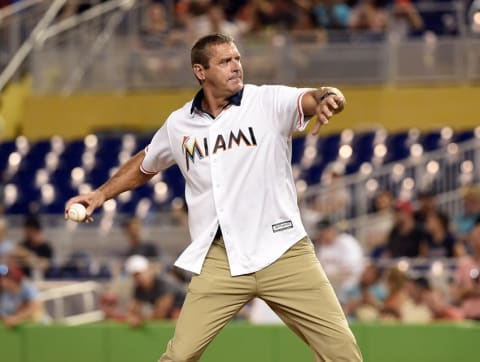
Kevin Brown – SP – 1986-2005 – 2.1% in 2011
I don’t like writing in the first person, but I’ll make an exception: I don’t care one iota that Kevin Brown was named in the Mitchell Report. He is absolutely a Hall of Fame pitcher. The arguments for and against PED users in the Hall of Fame, whether it’s steroids or amphetamines or whatever, have been laid out in great detail pretty much anywhere you want to look. I land firmly on the side of complete indifference.
Brown had just 211 wins and 2,397 strikeouts, but peak Kevin Brown was absolutely dominant. During his time in the National League, from 1996-2003, Brown went 109-58 with a 2.60 ERA and 1.08 WHIP to go with 1,405 strikeouts in 1,600 innings. This was good for an outstanding 157 ERA+ over that timeframe. On the same day Jim Edmonds made his career-defining catch (June 10, 1997), Brown made his career-defining start, a no-hitter for the Florida Marlins against the Giants. Brown would win the World Series with the Marlins that year, and would make it to the World Series again with the San Diego Padres in 1998.
Following the 1998 season, Brown made history by signing a seven-year, $105 million contract with the Los Angeles Dodgers. That contract, the first $100+ million contract in baseball history, would be the second biggest contract this offseason if it were to be signed today. Brown pitched for parts of 19 seasons, but his incredible peak is what makes him Hall of Fame caliber. Peak matters. Brown’s seven best seasons were worth 45.4 bWAR. Fellow Dodger Sandy Koufax? 46.1 bWAR.
Brown had career totals of 68.3 bWAR and 76.5 fWAR. The only pitchers with higher totals in both not in the Hall of Fame are Roger Clemens, Mike Mussina and Curt Schilling. Now that Barry Bonds and Roger Clemens appear to be on the upswing with their vote totals, one wonders if Brown would have fared better if on the ballot today. An interesting case will be Andy Pettitte two years from now. Pettitte was demonstrably inferior to Brown in most statistical regards, and he openly admitted to using PEDs. However, he played most of his career with the Yankees.
No voting system is perfect, but it’s inexcusable that these 10 players did not receive so much as a second year of consideration for the Hall of Fame.